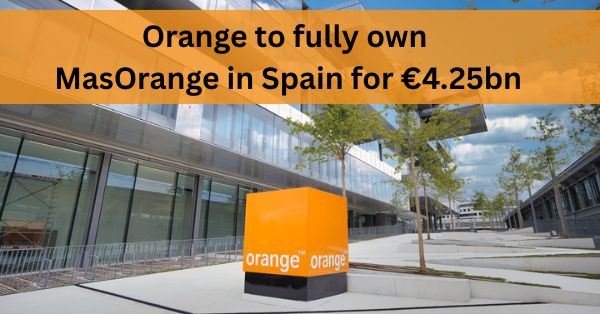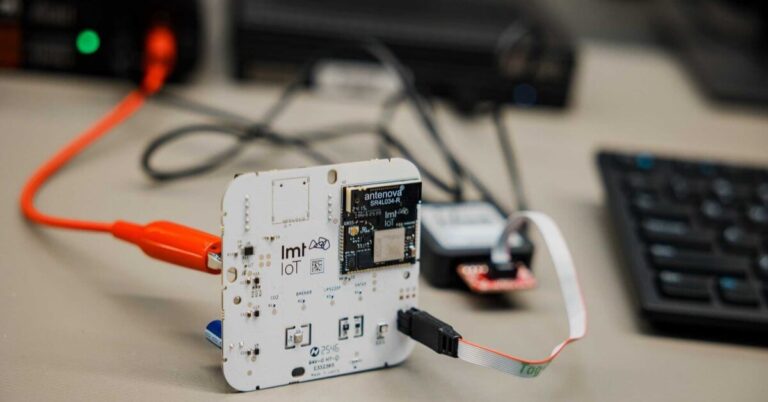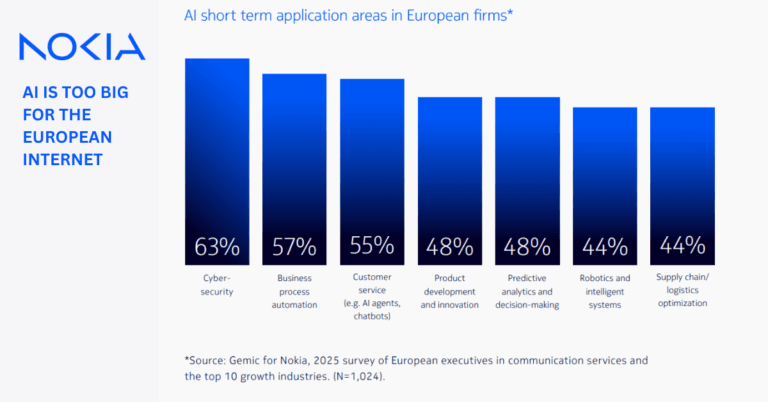Orange to fully acquire MasOrange in Spain for €4.25bn
Orange has reached a non-binding agreement to acquire Lorca’s 50% stake in MasOrange for €4.25 billion in cash, aiming for sole control of Spain’s leading operator by customer base.
Transaction overview and strategic fit
The transaction would shift MasOrange from joint control (Orange and Lorca JVCO, owner of MásMóvil) to full ownership by Orange. It aligns with Orange’s “Lead the Future” strategy and consolidates its second-largest European market. MasOrange combines the assets and brands of Orange España and MásMóvil, including Orange, Jazztel, Simyo, MásMóvil, Yoigo, Pepephone, Llamaya, and Lebara Spain—spanning mobile, fixed, and converged services.
Financial terms disclosed cover the €4.25 billion cash consideration for the 50% stake; additional details on financing or debt at the MasOrange level have not been made public. Full control simplifies governance, accelerates synergy capture, and gives Orange greater flexibility in network investment, pricing, and product roadmap execution in Spain.
Deal timeline, approvals, and closing targets
Orange expects to sign a binding agreement before end-2025, subject to agreement on final terms. The deal will be presented to employee representative bodies and will require regulatory clearance. Completion is targeted for the first half of 2026, assuming standard merger-control review and any associated conditions are met.
Impact on Spain’s telecom market and competition
The move cements Orange’s long-term industrial commitment to Spain and reshapes competitive dynamics in a market already undergoing rapid consolidation and network rationalization.
Consolidation and competitive landscape in Spain
Spain now revolves around four national mobile players: MasOrange, Telefónica, Vodafone Spain (now owned by Zegona), and Digi. The Orange–MásMóvil combination, approved with remedies earlier this year, created the largest player by customers. Full ownership removes joint-venture constraints, enabling faster decision-making on portfolio simplification, brand positioning, and commercial strategy across consumer and SOHO segments.
For challengers, the remedy-driven wholesale and spectrum arrangements—particularly those benefiting Digi—remain critical. Expect continued aggressive pricing at the value end of the market, even as MasOrange focuses on ARPU stabilization through converged offers and retention of multi-play households.
5G, fiber, and convergence investment priorities
Sole control should streamline capex allocation across 5G (including Standalone evolution), FTTH densification, and fixed–mobile convergence. Spain’s extensive fiber footprint and high take-up of converged bundles give MasOrange scope to lift lifetime value via premium tiers, speed upgrades, and adjacent services (security, TV, IoT). Network vendor rationalization and site sharing could further lower unit costs, while selective decommissioning and spectrum refarming improve network efficiency.
Regulatory review and policy outlook
The review should be more straightforward than a horizontal merger, but authorities will scrutinize competitive effects and existing remedy commitments.
Review scope, remedies, and compliance
The shift from joint to sole control typically warrants merger-control assessment, likely by Spanish authorities with potential EU involvement depending on thresholds. Because market structure (number of operators) does not change, the focus will be on whether governance changes alter competitive incentives, treatment of wholesale partners, and compliance with remedy packages underpinning the original Orange–MásMóvil approval. Expect conditions that reaffirm long-term wholesale access, spectrum use, and non-discriminatory practices.
EU consolidation context and policy signals
The deal lands amid an industry push to recalibrate EU merger policy to enable scale and promote investment in 5G and fiber. While this transaction is a buyout of an existing JV partner, it will be read as another test case for how Europe balances competitive intensity with infrastructure economics. Any signals from Brussels or Madrid on remedies and timelines will be closely watched by operators and investors across the region.
Strategic implications for operators, vendors, and enterprises in Spain
Full ownership changes the pace and certainty of MasOrange strategy, with downstream effects across wholesale, vendor ecosystems, and enterprise services.
Implications for Telefónica, Vodafone Spain, and Digi
Telefónica and Zegona-owned Vodafone Spain face a more unified competitor with greater pricing and portfolio cohesion. Digi’s growth path hinges on sustained access and spectrum arrangements; any renegotiation or operational friction will attract regulatory attention. Expect intensified competition in converged bundles, SME connectivity, and wholesale fiber.
Vendor and towerco impacts (RAN, core, sites)
Network vendors stand to benefit from a clearer, faster decision process on 5G SA, RAN modernization, and core evolution. In Spain, RAN suppliers such as Ericsson and Nokia are well placed to capture incremental swap-outs and densification, while IT and cloud partners can expect traction in analytics, security, automation, and edge services. Towercos, notably Cellnex and American Tower, should plan for ongoing site optimization, potential tenancy churn from consolidation, and new small-cell requirements tied to dense urban 5G.
Enterprise connectivity and services outlook
Enterprises could see a stronger, more integrated B2B portfolio from MasOrange—combining nationwide fiber, 5G, and value-added services like SD-WAN/SASE, IoT, and private networks. Procurement teams should monitor product rationalization across the brand family, SLA evolution as 5G SA expands, and potential improvements in multi-cloud connectivity and security bundles. Short term, pricing may remain competitive; medium term, expect more emphasis on quality, assured performance, and vertical solutions.
What to watch next in Spain’s telecom market
Execution milestones over the next 18 months will indicate the speed at which Orange can translate control into market impact.
Key milestones, signals, and KPIs
- Signing of the binding agreement and any disclosed financing structure or balance-sheet impacts.
- Regulatory review scope, including whether Madrid or Brussels leads, and any conditions reaffirming wholesale and spectrum commitments.
- Network roadmap signals: 5G SA coverage targets, spectrum refarming, FTTH consolidation, and site rationalization plans.
- Brand and portfolio changes across consumer, SME, and enterprise lines, including convergence tiers and security/cloud add-ons.
- Wholesale posture toward Digi and MVNOs, a bellwether for competitive intensity in value segments.
If approved on the indicated timeline, full control of MasOrange should give Orange a cleaner operating model in Spain, faster execution on 5G and fiber, and more leverage in converged propositions—raising the bar for rivals while keeping regulators focused on preserving choice and access.








































